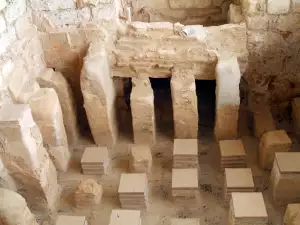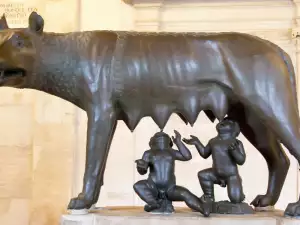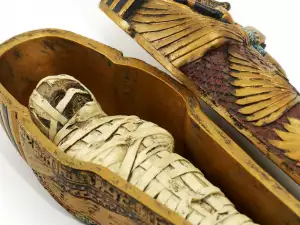"The Temple of Artemis of Ephesus is an extraordinary and unique earthly home of the gods. Whoever glimpses it once, will be convinced that the earth and sky have switched places and that the world of the immortals and gods had moved from heaven to earth. "
Thus ancient writer Philo describes the building, which all people of antiquity unanimously proclaim as the most delightful in the world.
Until recently, the Turkish city of Ephesus, where the magnificent temple stood centuries ago, was a desolate pile of rubble. Today the city is a top tourist destination, but of the Artemis temple only a single column remains. Over the centuries, as the bottom of the harbor became more shallow, so too did the importance of Ephesus fall and its partly destroyed houses became more deserted.
The Temple of Artemis - the third wonder of the world was not built on the Acropolis of Ephesus, like the Parthenon in Athens, but in a shady valley about 4.5 miles (7 km) east of the city. The building was considered to be the peak of architectural design and artistic decoration.
"The huntress with the gold spindle", "goddess of valorous character", “the girl, worthy of respect "... so the immortal Omir, called Artemis - the beautiful and ageless goddess, whose earthly sanctuary was the temple on Ephesus.
According to ancient legends, Artemis was born on the island of Delos (Cyclades islands), and according to another, in a grove, near Ephesus. Along with her was born her twin brother, Apollo.
Since the beginning, Artemis had duplicated a passionate desire to hunt. Therefore, she was portrayed as a goddess with a bow and arrows. Her Latin name is Diana. And, since hunting and weapons are closely connected with war, people honor her as a goddess of war. For the Greeks, Artemis was the ideal of female beauty.
From the first century of our chronology, the history of the Artemis Temple and Ephesus is intertwined with the history of Christianity. St. Paul and St. John had lived and worked there. It is precisely there that it is claimed that St. John died at the age of 120.
According to Orthodox church tradition, the Virgin Mary lived and died at Ephesus, and was buried there in exactly 48 AD.
The cult of Artemis that worshipped her as a major goddess of Ephesus lasted hundreds of years. Artemis was changed and adjusted according to circumstances - a great example of how man creates his gods in his own likeness, on the basis of his own worldview. Only one thing remained the same - for the Greeks she was the "Virgin Goddess".

But could Christianity have chosen a more suitable location than Ephesus, to officially proclaim the cult of the Virgin Mary, since the cult of the "Virgin Goddess" had been known there since mythical times? Is it only coincidence, that during the destruction of the Temple of Artemis, the church of the Virgin Mary was being raised right next to it?
How the Temple of Artemis looked in ancient times, is unknown. It is only known that at around the 8th century BC, near the site where there are now only ruins, there was a little shrine with a wooden statue of the goddess. It is alleged that the church was completed at the end of 5th century BC, when it really became a wonder of the world.
Ancient authors agree that the temple was built over a period of 120 years. And at its heart in a little room, an altar was placed with a statue of the goddess, made of cedar wood.
360 ft (110 meters) long and 180 ft (55 meters) wide, was the size of the abode of the goddess, surrounded on all sides by two rows of columns. The temple was built with a total of 125 grand columns. Today only one remains.
In regards to sculptural decoration and architecture, the temple really was state of the art. It suffered a devastating fire in 356 BC. In just one night, it turned to ashes. The grateful Greeks raised anew the divine temple, even more exquisite than before.
And so, for more than five hundred years the temple shone in all of its beauty and splendor. With the coming of the Goths, however, the temple was destroyed once more.
With the decree of Theodosius against the pagan temples of 383, the death penalty was issued to the ancient famous temple of Artemis of Ephesus, with enforcer of the sentence being an earthquake, which turned the magnificent sanctuary to ruins, wrote the researcher Voytek Zamarovski.












